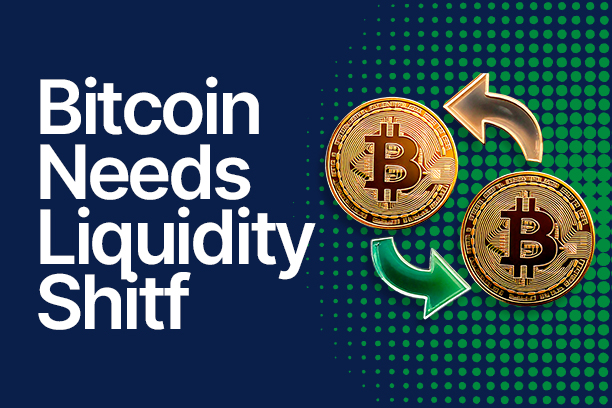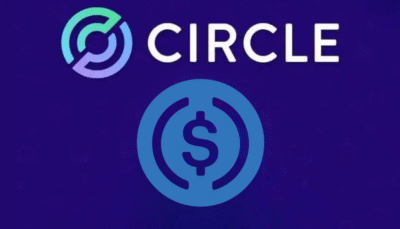Bitcoin’s recent price action has left investors in a state of uncertainty and frustration. After reaching highs of $109K in March 2024, the leading cryptocurrency has since fallen into a sideways trading pattern, fluctuating between $78K and $85K.
Many wonder what it will take for Bitcoin to break past resistance levels and surge toward new all-time highs.
Experts say the answer isn’t in crypto but in macroeconomic conditions—specifically, liquidity.
Matthias, in an episode of The CoinRock Show, explained that Bitcoin’s next breakout won’t happen unless there’s a fundamental shift in the availability of capital in global markets. Until then, price action will remain choppy, and investors should prepare for continued volatility.
Why Bitcoin Market Feels Stuck
Despite strong long-term fundamentals, Bitcoin has struggled to maintain bullish momentum. Trading volume across major exchanges has dropped by nearly 30% in the past month, a clear sign that both retail and institutional traders are hesitant to make aggressive moves.
Market sentiment has also cooled, with funding rates for perpetual futures contracts turning negative, meaning more traders are betting on Bitcoin’s price declining rather than rising.
Altcoins have fared even worse. Ethereum, which briefly traded above $2,200 in early March, has now dipped to $1,800, while the broader altcoin market has seen corrections of 30-50%.
The Total Value Locked (TVL) in DeFi has also taken a hit, dropping from $95 billion to $85 billion, reflecting a wider withdrawal of liquidity from the crypto space.
Matthias summed up the current situation bluntly, stating:
“We’re not in a bear market, but we’re definitely not in an up-only phase either. Bitcoin is stuck in a frustrating chop, and until liquidity improves, it’s not sending.”

Liquidity Is the Missing Ingredient for a Bitcoin Surge
The biggest roadblock to Bitcoin’s next breakout is the lack of available liquidity in global financial markets. Over the past year, the Federal Reserve has maintained high interest rates, making borrowing money and investing in risky assets like Bitcoin is more expensive. This tight liquidity environment has restricted capital inflows into crypto, stalling momentum and limiting large institutional buys.
Historically, Bitcoin has performed best in environments where Quantitative Easing (QE) policies were in place. During the 2020-2021 bull run, unprecedented QE measures injected trillions of dollars into the economy, creating an influx of liquidity that sent Bitcoin from $10K to $69K in just over a year.
However, the current macroeconomic climate is vastly different. Quantitative Tightening (QT) is still in effect, meaning central banks are reducing liquidity rather than increasing it. Bitcoin’s upside remains capped without a clear pivot toward looser monetary policy.
Matthias emphasized this point, saying:
“Liquidity is everything in this market. The last time Bitcoin truly sent, the Fed was printing money like crazy. Right now, that’s not happening, and until it does, we’re going to stay stuck.”
Fed’s Next Move Matters More Than Any Crypto Event
Many crypto investors are focused on Bitcoin’s upcoming halving, expected to occur in April 2024, as a potential catalyst for a price surge.
While halvings have historically led to bullish price action, the impact could be significantly weaker if macro conditions remain unfavourable.
Matthias pointed out that crypto-native events, such as halvings or ETF approvals, now have less influence than macroeconomic policies.
He explained that Bitcoin’s ability to break past $100K will largely depend on whether the Federal Reserve lowers interest rates and shifts away from QT.
“People keep asking when Bitcoin will send, but they’re looking in the wrong place. It’s not about a halving or an ETF—it’s about liquidity. Until the Fed pivots, we’re going nowhere fast.”
What Needs to Change for a Bitcoin Rally?
For Bitcoin to move beyond its current price range and push toward new highs, there must be a clear shift in monetary policy and liquidity conditions. The key factors that could drive such a change include:
- A Federal Reserve rate cut: If inflation slows and the Fed reduces interest rates, liquidity could return to the market, boosting demand for risk assets like Bitcoin.
- A return to Quantitative Easing (QE): Any move toward expansionary monetary policy would inject capital back into the system, making it easier for institutional investors to allocate funds to Bitcoin.
- A major macroeconomic shift: If global financial conditions worsen, central banks may be forced to intervene, potentially creating a more favorable environment for Bitcoin’s growth.
Until these conditions are met, Bitcoin is likely to remain trapped in a tight trading range, frustrating traders but presenting long-term investors with opportunities to accumulate.
Patience Is Key in Crypto
While the current market conditions may seem discouraging, Matthias reassured investors that this phase is a normal part of the crypto cycle.
Bitcoin has gone through similar periods of sideways movement and corrections in previous bull markets before eventually breaking out.
The difference this time is that macro forces are playing a much larger role than ever before. Investors must now pay attention to central bank decisions, global liquidity trends, and interest rate policies, as these will be the key drivers of Bitcoin’s next big move.
For those wondering when Bitcoin will finally send, Matthias left them with one simple reality:
“Crypto moves in cycles, and every cycle has a waiting phase. This is that phase. If you’re patient and paying attention, you’ll be ready when the breakout comes.”
Until then, the market remains a waiting game—one that will only end when liquidity returns.





